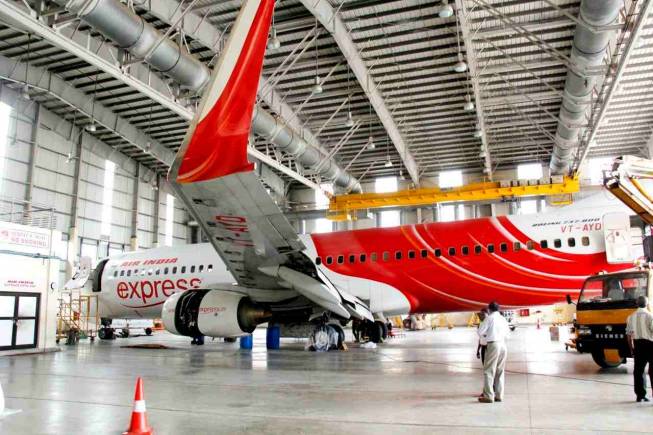About 650 aircraft have been grounded across airports in the country. The focus, for airlines, is to keep them ready-to-use whenever the lockdown is lifted
How do you maintain your car when you can't drive it for an extended period, say during the lockdown for example? Maybe clean it periodically, switch it on for a while so that the battery doesn't drain out; and even take it for a short spin around the apartment.
The methods are a little similar, but much more varied, methodical and complex, when it comes to maintaining the 650 aircraft that are parked across airports in the country.
"There is a well-defined manual with instructions on how airlines should store and maintain these aircraft. No one has to put their heads and racked their brains to understand how to do it," says Ashwani Acharya, CEO, CAE Simulation Training.
At the same time, adds the industry veteran, maintenance is integral to any airline's plan to get back to service as soon as possible.
"The maintenance drill has to be carefully monitored and recorded so that all the checks are done, and the aircraft is ready for operation whenever possible. If the maintenance is not done now, then the airline will have to spend more resources and time when the plane has to be operated once the skies reopen," explained Acharya.
All airlines, including IndiGo, SpiceJet and GoAir, have parked their aircraft after the lockdown call from Prime Minister Narendra Modi. For some of these airlines, especially IndiGo, the aircraft are parked in over a dozen airports. This means maintenance could also be a logistical challenge.
"Wherever an airline has a base, it will have a basic team of engineers, equipped with necessary tools. If an airline has parked its planes in airports where it doesn't have an engineering team, then this will have to be outsourced," says a senior executive from the industry.
The drill
The maintenance, industry executives say, depends on the aircraft type, duration of the grounding, and also the environment.
For instance, if the aircraft is parked in one of the airports in Rajasthan, where the air is dry and hot, the maintenance manual will differ, from say what an engineer will follow for a plane in Chennai, which is more humid.
Still, there are some parts that are critical and the protocol is intense irrespective of the variables. The most critical is the engine, which is also the most expensive part of an aircraft.
Depending on the duration of the grounding, dry and wet motoring runs are conducted to check the engine. In simple terms, just like we switch on the car once in a while to check if the engine is ok, for planes too this exercise is done.
In dry motoring, fuel is not introduced, and in wet, it is. It helps engineers check the vitals of an engine.
Motoring the engines also helps in removing the moisture that could build up in fuel tanks and lead to condensation, which contaminates fuel or corrodes the tank.
Fuel tanks also tend to have microbial growth at the bottom where the water collects. Periodically cleaning and draining out the water helps prevent microbial growth.
Attention is also given to the tyres. To ensure tyres are healthy, they are rotated periodically to ensure against wear and tear. How are they rotated? With the use of a jack, just like in a car.
Inside the aircraft, importance is given to keep the cabin clean of food particles, which may otherwise attract rodents. Inside the cockpit too, periodic testing is done to ensure all the vitals are functioning. "If the grounding is long, then electricity supply is switched off, and all openings are covered to prevent dust," says a senior engineer.Time to show-off your poker skills and win Rs.25 lakhs with no investment. Register Now!











